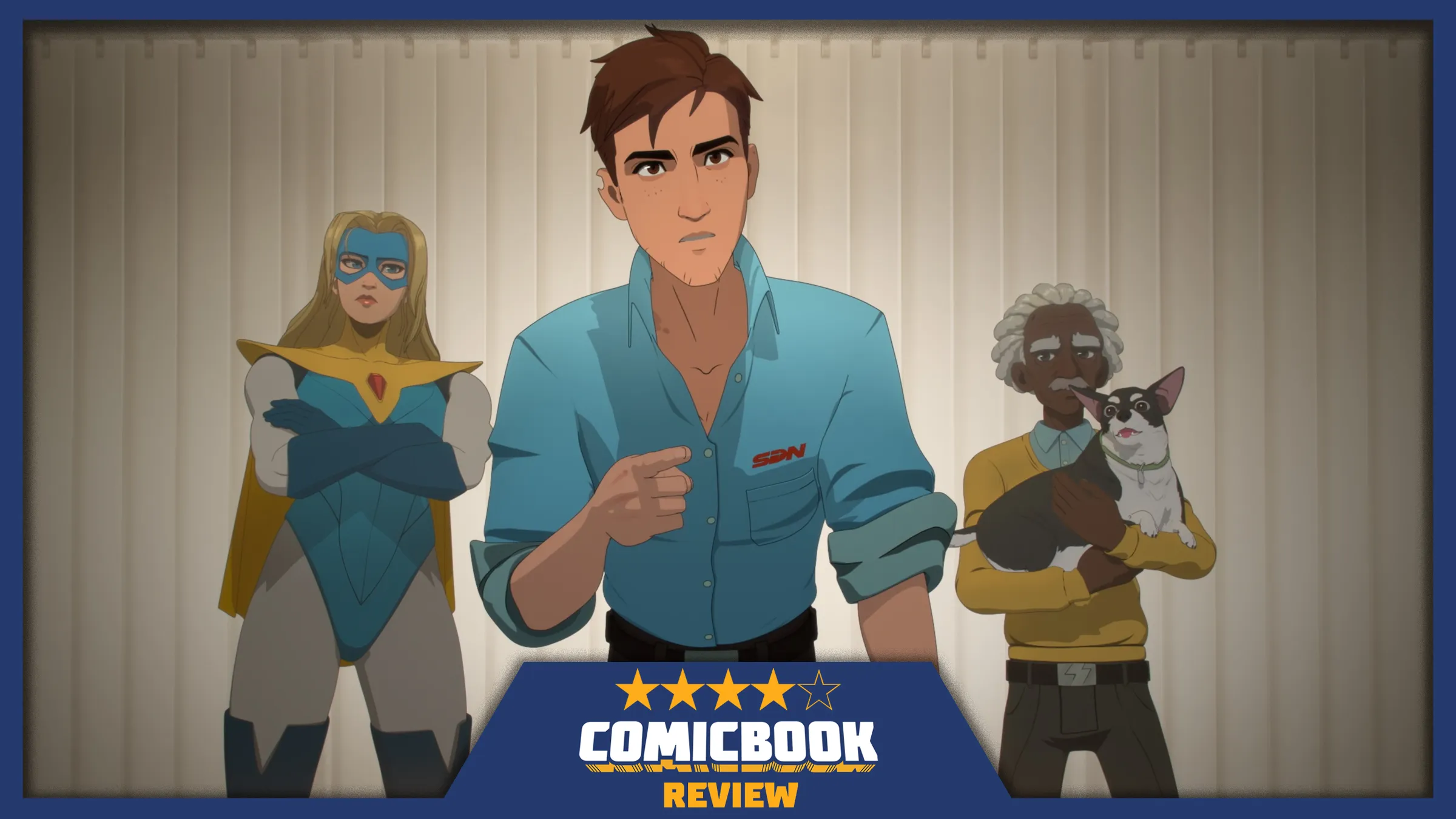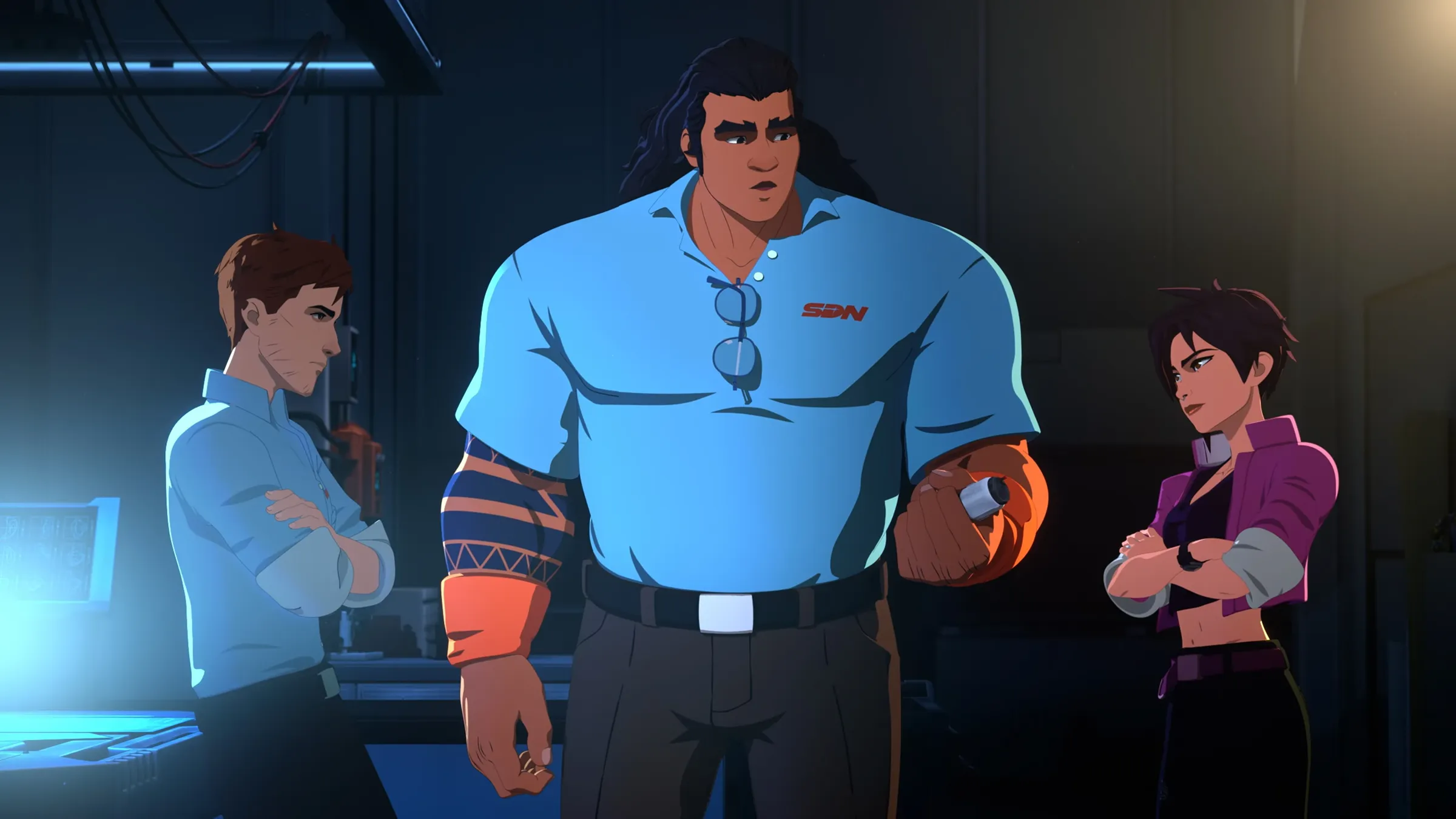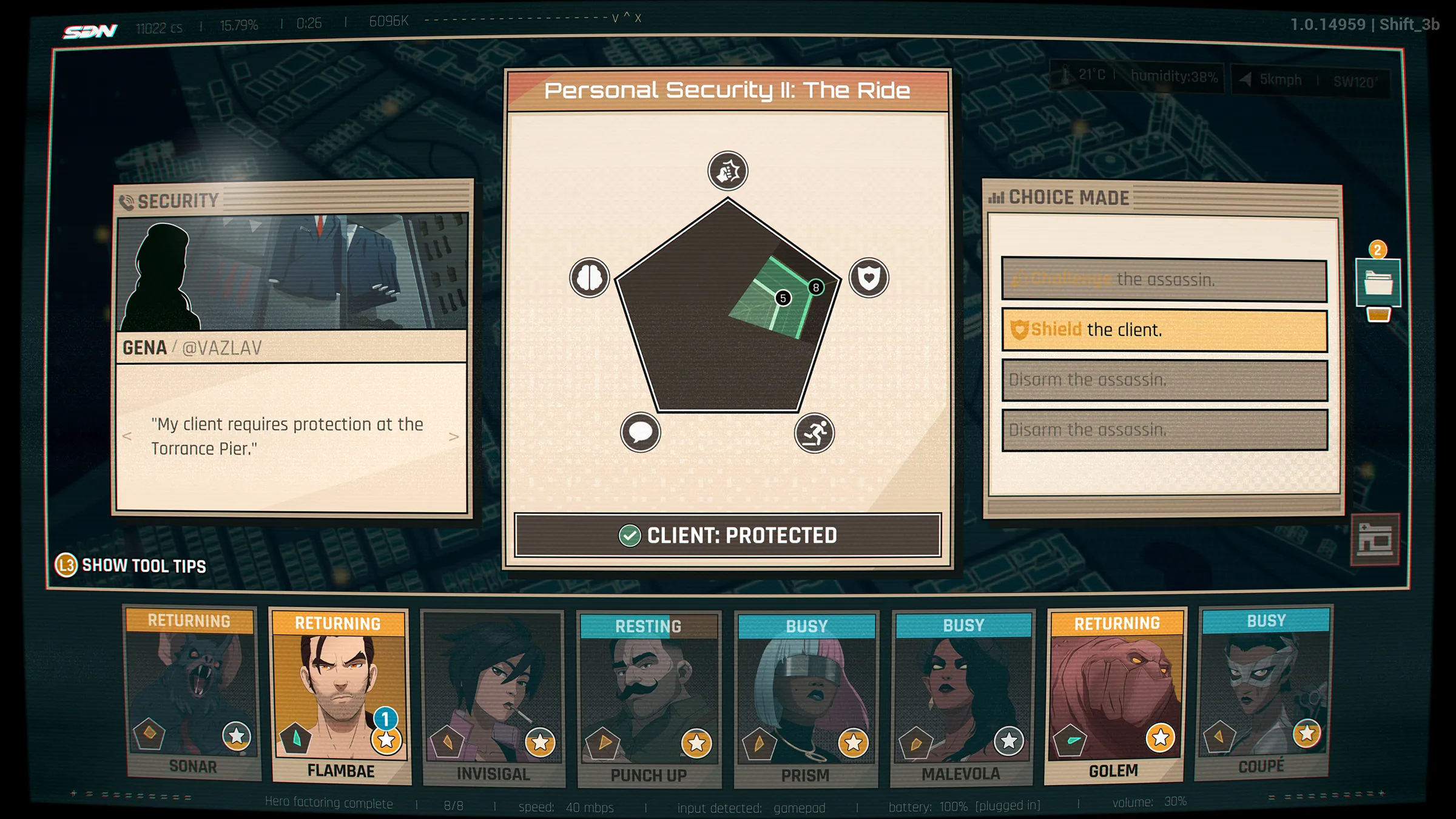
The game Dispatch started strong with a fantastic opening chapter, setting a high standard for narrative adventures. Its beautiful art and smooth animation immediately grabbed attention, but it was the funny, heartfelt story – and the promise of something bigger to come – that truly impressed. While Dispatch Episodes 3 & 4 don’t quite reach that same level, they still offer plenty to enjoy and maintain the momentum from the initial episodes.
Episodes 3 and 4 feel a bit slower-paced than the first two episodes of Dispatch. While the beginning had lots of action and detailed cutscenes, these later episodes feature fewer fights – there are no quick time events – and focus more on dispatch sequences. This change in focus isn’t inherently negative, but it does impact the rhythm of the story and the amount of narrative that unfolds.
Rating: 4/5
| Pros | Cons |
|---|---|
| Same beautiful animation and art style | Not quite as funny as the first two episodes |
| Focuses more on intimate character development | The broader story has seemingly taken a bit of a backseat |
Dispatch Episodes 3 and 4 Focuses on the Characters

Because there aren’t as many action-packed fights, the game relies more on its beautiful art style, impressive camera work, and smooth animation – which are as good as what you’d see in a modern animated TV show, unlike many games of this type. While a slower pace could hurt other superhero games, Dispatch uses it to give players a deeper look at its characters.
Episodes 3 and 4 focus on the inner lives of the main characters: Robert Robertson, the witty former villain Invisigal, and Blonde Blazer, the strong leader of the SDN branch. Players can influence which character receives more focus, but the story generally explores Invisigal’s rehabilitation through the Phoenix Program and Robert’s efforts to reclaim his Mecha Man suit.
As we’ve touched on before, the story of Dispatch is really about people rebuilding their lives after tough times, and Robert and Invisigal both represent that struggle in unique ways. Because of this central theme, it makes sense to focus a couple of episodes on their journeys, even if it means putting other storylines on hold for a while. Both characters are complex and have a lot of room for growth, and Robert’s wit combined with Invisigal’s hidden vulnerability make them particularly compelling. While other members of the Z-Team also explore this theme – that’s the point of the team, really – this duo deserves a closer look right now.
Episodes 3 and 4 focus more on building the groundwork for future storylines than delivering immediate excitement. While hints of what’s coming – like Mecha Man’s return, a possible romance, and a Z-Team member dealing with job loss – are present, these episodes prioritize setting up future events over large-scale action. This is especially noticeable in the endings, which aren’t cliffhangers designed to tease a major villain, but instead focus on emotional moments and character growth.
These episodes are a little less exciting than before, mainly because the show is pausing a larger storyline and has fewer standout comedic moments. While still funny, it doesn’t quite reach the heights of previous episodes. However, it’s understandable why Dispatch is focusing on developing its core characters. This slower pace is likely intentional, building towards something bigger later in the season. The challenge with releasing episodes weekly is that setup episodes often need the context of the entire season to truly shine.
Dispatch Episodes 3 and 4 Contain More, Well, Dispatching

Life is Strange: True Colors’ dispatch system in Episodes 3 and 4 becomes significantly more challenging. While choosing where to send team members and utilizing their skills remains an engaging gameplay element – more so than typical adventure game puzzles – these sections are now much faster-paced and demanding. Errors are quickly penalized, and each situation requires careful thought. It’s almost guaranteed that at least half the team will sustain injuries during the first or second shift.
It’s frustrating to constantly struggle, and it makes you wonder how much of what happens is just random. It’s difficult to tell if the difficulty is intentional, though, because the story focuses on failure and the team’s internal conflicts. It would be a smart move for the creators to make the challenges reflect this tension. Even though losing can be annoying and lead to outbursts, the game doesn’t really penalize you for making mistakes. It would be cool if your choices directly impacted the story, but simply letting the difficulty level influence the overall mood works well too. Ultimately, whether the challenge is deliberate doesn’t matter as long as it adds to the atmosphere and isn’t overly punishing.
The third and fourth episodes of Dispatch continue the promising start of the series, though at a more measured speed. While still concise – each episode is just under an hour and plays smoothly – they focus less on big action sequences and more on developing the characters. A few more laughs and clearer hints about the overall story arc would have kept the initial energy going, but it’s understandable that Dispatch is taking the time to explore the personalities of its already-likable heroes.
A PS5 copy of Dispatch was provided by the publisher for the purpose of this review.
https://comicbook.com/gaming/feature/dispatchs-strategy-game-great/embed/#
Read More
- The Most Jaw-Dropping Pop Culture Moments of 2025 Revealed
- Ashes of Creation Rogue Guide for Beginners
- ARC Raiders – All NEW Quest Locations & How to Complete Them in Cold Snap
- Best Controller Settings for ARC Raiders
- Where Winds Meet: How To Defeat Shadow Puppeteer (Boss Guide)
- Ashes of Creation Mage Guide for Beginners
- Where Winds Meet: Best Weapon Combinations
- Hazbin Hotel season 3 release date speculation and latest news
- My Hero Academia Reveals Aftermath Of Final Battle & Deku’s New Look
- 10 Most Disturbing Christmas TV Episodes That Subvert Holiday Cheer
2025-10-30 18:41